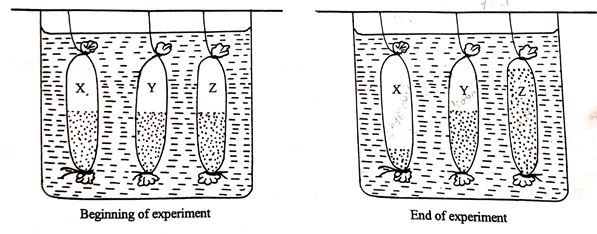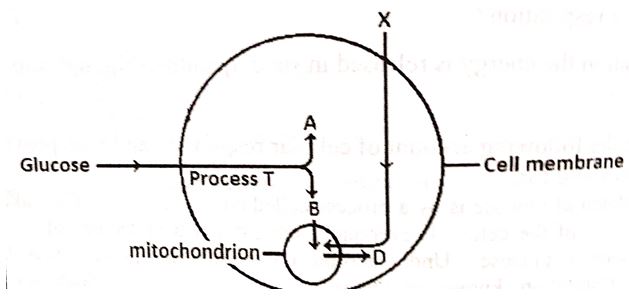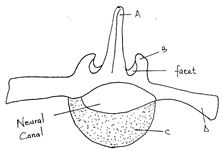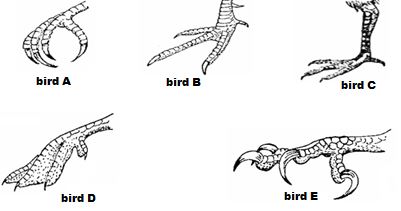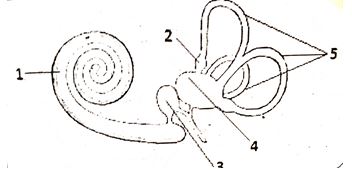Questions
Instructions
- Write your name, school and class in the spaces provided
- Answer all the questions in the spaces provided.
- This paper consists of 9 printed pages
- Name two branches of microbiology (2marks)
- Give two important functions of a fruit with regard to a plant (2marks)
- Construct a food chain with the following: (1mark)
Orange fruit, large bird, fruit fly, small bird - A student wrote the scientific name of Baobab tree as adansonia Digitata.
- Identify two mistakes made by the student (2marks)
- Identify the species name (1mark)
- State the differences between light and electron microscopes in terms of the following: (2marks)
- way of illumination
- Source of illumination
- State two factors to consider the type of microscope to be used in a given biological investigation (2marks)
- Explain how parasitism differ from predation (2marks)
-
- Explain how papain is used as a meat tenderizer in food processing industries (2marks)
- Name a plant excretory product that is toxic to plasmodium (1mark)
- Distinguish between ilium and ilium (1mark)
- Explain why Egyptian mummies are not regarded as fossils (1mark)
- Explain what would happen to digestion and blood sugar regulation if the pancreatic duct of a mammal was blocked. (3marks)
- Equal amounts of three different sugar solutions were placed in the visking tubings X, Y and Z. the tubings were placed in a beaker of water containing 5% sugar solution. The set up was left for two hours. The results were as shown below.
- Name the process being tested in this experiment (1mark)
- Account for the observation (3marks)
-
- Define the term allergy (1mark)
- Distinguish between allograft and isograft (2marks)
- State two adaptations of the placenta to its function (2marks)
- The diagram below shows chemical reactions I and II which are controlled by enzymes.
- Into which class of carbohydrates is X? (1mark)
- Name reaction I and enzyme A (2marks)
Reaction I…………………………………………………………………………………...
Enzyme A…………………………………………………………………………………...
- The figure below illustrates aerobic respiration in a cell
- Name the raw material named X and products A and B (3marks)
- Identify process T (1mark)
- Name a characteristic in man controlled by multiple alleles (1mark)
- Some scientists argue that Lamarck’s theory is false and not valid. What is your scientific view on this? (3marks)
- State two natural ways in which in which seed dormancy can be terminated (2marks)
- Explain why the temperate bears have thick adipose tissues (2marks)
- Study the diagram shown below of the anterior view of a lumbar vertebra of a mammal.
- Name the parts labelled: A, and B, (2 marks)
- State the adaptation of the part labelled D. (1 mark)
- Distinguish between parthenocarpy and parthenogenesis (2marks)
- State three symptoms of menopause (3marks)
- The figure below shows feet of various birds. Study the diagram and answer the questions that follow.
- Name the type of evolution represented by the diagrams. (1 mark)
- Using Darwin’s theory of evolution, explain how the feet of bird E would have evolved. (3 marks)
- Describe how contraction of the diaphragm muscles leads to inhalation (4marks)
- Explain the effect of burning of fossil fuels on the health of humans (3marks)
- State two distinguishing characteristics of members of the kingdom Monera (2marks)
- State two structural differences between the xylem and the phloem (2marks)
- Explain why seeds buried deep in the soil fail to germinate (2marks)
- Explain how starch provides energy for living organisms (2marks)
- The diagram below shows part of the inner ear
- Name the apparatus (1mark)
- State the function of the apparatus (1mark)
- Name the parts labeled 1 and 5 (2marks)
-
- state the role of the following hormones during lactation (2marks)
- Prolactin
- Oxytocin
- Other than the role mentioned above, give another role of oxytocin in the body of a female (1mark)
- state the role of the following hormones during lactation (2marks)
Marking Scheme
- Virology
- Bacteriology
- The fruit protects and nourishes the seed and embryo;
- It also brings about dispersal of seeds;
- Orange tree/plant fruit fly small bird large bird;
- N/B The producer must be an organism, not an organ.
-
-
- The genus name started with a small letter,
- The specific name started with a capital letter
- The names are not underlined separately.
- Adansonia digitata the name must be underlined separately.
-
-
- Light microscope uses light for illumination while electron microscope uses a beam of electrons;;
- Light microscope uses light from the sun/artificial bulb while electron microscope uses electrons from an electron gun;;
-
- The degree of detail needed
- The nature of the specimen
- Size of the specimen
- In parasitism, the organism must not necessarily killed before the parasite obtains nutrients from it while in predation, the prey must be killed;
- In parasitism, there is an association between the parasite and the host unlike in predation.
-
- It contains proteolytic enzyme; that breaks down long chains of proteins to soften the meat;
- Quinine;
- Ileum is the lower part of the small intestine while ilium is one the fused bones (forming innominate bone with ischium and pubis) of the pelvic girdle;
- They are artificially preserved yet fossil formation must accidental/natural;
- Digestion was impaired and blood sugar regulation remained normal; digestion was impaired because the pancreatic juice containing digestive enzymes released did not reach the duodenum; blood sugar hormones, insulin and glucagon were released directly into the bloodstream;
-
- osmosis;
-
- X- X is hypotonic and therefore lost water to the liquid in the beaker by osmosis, hence reduction in the size of the visking tubing;
- Y- Remained the same, the liquid Y was of the same concentration with the liquid in the beaker, hence no net movement of water by osmosis;
- Z- Z is hypertonic and therefore drew water from the liquid in the beaker by osmosis, hence increased in the size of the visking tubing;
-
- allergy is a hypersensitive reaction to an antigen by the body;
-
- Allograft- this is a graft obtained from persons that are not genetically identical;
Isograft- this is a graft obtained from a genetically identical twin.
- Allograft- this is a graft obtained from persons that are not genetically identical;
-
- It is glandular and secretes hormone progesterone and traces of oestrogen;
- It is semipermeable/has a sinus to selectively allow substances into and out of the foetal circulatory system;
- It is highly vascularized to create a steep concentration gradient for faster transport of dissolved food substances into the foetal circulatory system;
- It has a countercurrent flow system, to maintain a steep gradient for maximum exchange of materials;
-
- disaccharides
-
- Condensation
- Enzyme Maltase
-
-
- X- oxygen gas
- A- energy/adenosine triphosphate
- B- Pyruvic acid
- Glycolysis
-
- Inheritance of ABO blood groups;
- My scientific view is that is partly valid and partly false; valid in the sense the environment influences the phenotypic expressions of the genes; false, because phenotypically acquired characteristics in the course of the lifetime of an organism cannot be inherited because they do not affect the gene make up of an organism;
- Suitable warm temperature, moisture, thinning down/softening of the testa by microorganisms;
- Thick adipose tissues store a lot of fat; which insulate the body against heat loss;
-
- A- Neural spine
B- Metapophysis reject Metapophyses - It is long to increase the surface area for attachment of (abdominal) muscles;
- A- Neural spine
- Parthenocarpy is the development of fruits without fertilization while parthenogenesis is the spontaneous development of an embryo from unfertilized egg cell;
-
- Night sweats,
- Random hot flashes during the day
- Changes in mood that shows depression, fatigue.
- Vaginal dryness
- Loss of minerals such as calcium
- Osteoporosis/softening of bones
-
- Divergent evolution
- Bird E evolved such feet which are used to scratch the ground to obtain food materials like worms and other soil organisms; It evolved to that to ensure the bird is better adapted to its environment; and therefore with that feet it can compete favourably for the limited food resources and this increases its survival;
- Diaphragm flattens; volume of the thoracic cavity increases; pressure of the thoracic cavity reduces; lungs are inflated/ air rushes into the lungs;
-
- The oxides of nitrogen are poisonous to humans affecting their respiratory systems when inhaled;
- Nitrogen (IV) oxide is carcinogenic/causes cancer;
- High concentration of Sulphur (IV) oxide causes bronchitis, pneumonia and heart failure;
- They slow down ciliary activities in the respiratory tract;
-
- Their cell walls are made of murein/ proteins and sugars;
- They lack membrane bound organelles/ few organelles/ lack mitochondria
- Are prokaryotic;
-
- Xylem has lignified walls while phloem lacks;
- Xylem is made of dead cells while phloem is made of living cells;
- This is because of limited oxygen; required for respiration to provide energy required for germination;
- Starch is first hydrolyzed to simple sugars; which are then oxidized to provide energy;
-
- vestibular apparatus/vestibule;
- Maintain body posture in relation to gravity;
- 1- cochlea
5- Semi-circular canals
-
- stimulates milk production
- Stimulates milk let down/stimulates the contractions of lobule containing alveoli to release milk into the lactiferous ducts;
- It stimulates the contractions of the myometrium during giving birth/parturition;
Join our whatsapp group for latest updates
Tap Here to Download for 50/-
Get on WhatsApp for 50/-
Download Biology Paper 1 Questions and Answers - KCSE 2021 Westlands Mock Exams.
Tap Here to Download for 50/-
Get on WhatsApp for 50/-
Why download?
- ✔ To read offline at any time.
- ✔ To Print at your convenience
- ✔ Share Easily with Friends / Students

